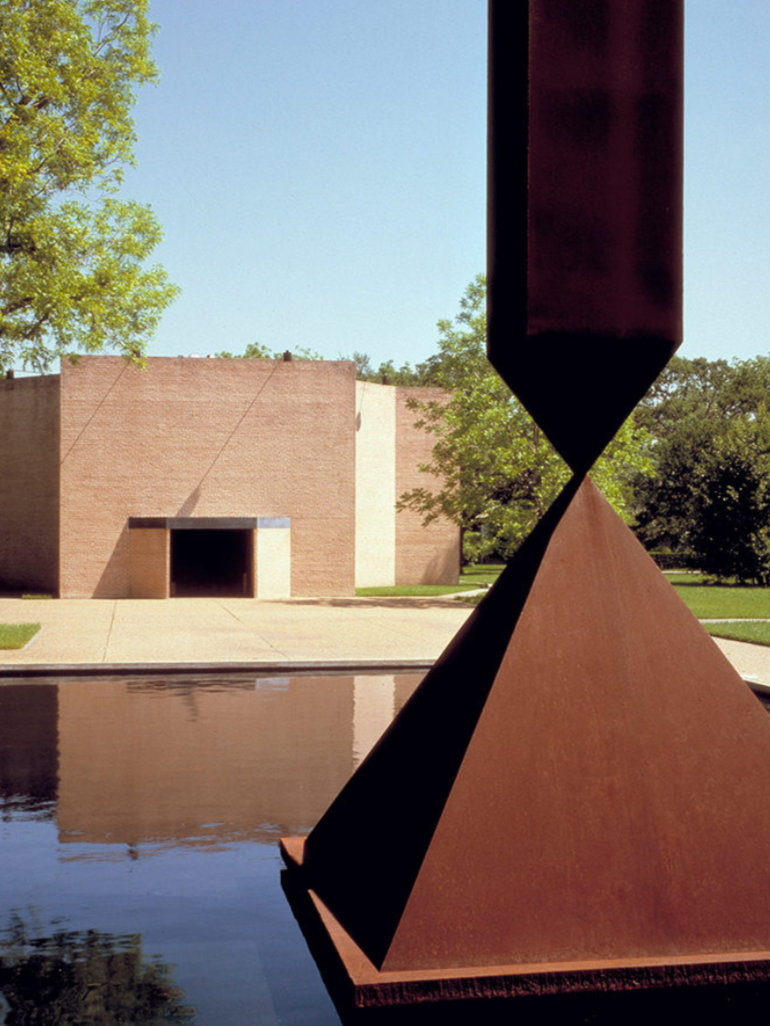
200 E Martin Luther King Jr Blvd, Austin, TX 78712 Copy to clipboard
30.281709, -97.737816 Copy to clipboard
Before you go
Admission: Free admission every Tuesday allows visitors access to both the museum and 'Austin'. General admission fees apply on other days (20 USD for adults, 10 USD for ages 6–17, free for children under 5), granting access to the museum and this installation.
Facilities: Restrooms, a gift shop, and a café are available at the main Blanton Museum building.
Rules: Non-flash photography is permitted. Backpacks are not allowed inside but can be checked at the museum for your convenience.
Time management: Allocate at least 20–30 minutes to experience 'Austin.' Combine this visit with time in the Blanton Museum for a full experience.
Best visit time
Visit on a sunny day to fully appreciate the vibrant colored light beams projected by the stained-glass windows.
Spring afternoons (around 3 PM) are particularly ideal for colorful light displays, as the sun is at an angle.
Avoid overcast or cloudy days, as the light and colors may appear muted.
Closed on Saturdays during UT home football games. Check the schedule to plan accordingly.
Directions
By car
Use the museum drop-off on Brazos Street for convenient access.
By bike
Bicycle racks are located near MLK Blvd. on the west side of the Smith Building and outside Jester Circle, north of Brazos St.
Bring your own lock.
By bus
Cap Metro transit routes 1, 3, 7, 10, 18, 19, 20, 801, and 803 serve the area.
Closest stops include #5992 at 112 MLK / Congress and #2522 at 311 MLK / San Jacinto.
By train
There is no direct train service, but Cap Metro transit lines are convenient for connections.
Parking
Main: Brazos Garage on MLK Blvd. offers ADA-accessible parking on Ground Level (Level G), just 0.2 miles (a 4-minute walk) away.
Alternative: The Bob Bullock Museum offers underground parking for per vehicle for all-day use, conveniently located just across the street.
Introduction
For everyone with an interest in design, Ellsworth Kelly’s 1 Austin is a great feast for the eyes and has a pretty interesting story behind it. Austin is a 2715 square feet (252 square meters) building on the grounds of the Blanton Museum of Art 2.
The story behind the building goes that in 1986, Douglass Cramer, who was a television producer, commissioned Ellsworth Kelly to design a structure on his vineyard. He had long been an avid admirer of Kelly’s work and wanted him to create an original artwork on his Sandra Barbara property.
According to Kelly’s designs, the artwork was a simple double-barrel vaulted building. It was modeled according to Roman religious architecture and featured colored glass windows 3 making a grid over the entrance, 14 marble panels on the walls, a totem sculpture in the rear part of the building, etc.
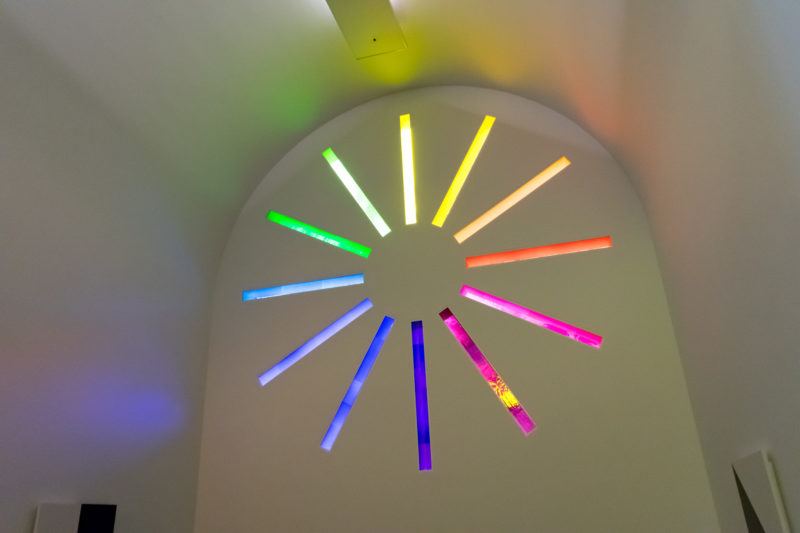
Unfortunately, though the artist had the models of the chapel in his studio, the project fell through and it seemed that the building would never be constructed. It was 30 years later when the project was realized through the fundraising and coordinated efforts of Blanton Museum’s director Simone Jamille Wicha, who raised funds and sent sample materials and renderings to Kelly for approval.
Kelly did not get to see his completed project as he died two months after construction started. However, the building, in all its color and splendor, matches Kelly’s initial ambitions perfectly.
When you first enter and lay your eyes upon the structure that is Kelly’s final work, you can tell that it is a perfect blend of art, sculpture 4, architecture 5 and painting 6; you can immediately tell that it is supposed to be a building that inspires rest. Entering the structure feels like entering a refreshing realm.
When the sun is in the sky, its light 7 passes through the colored glass panes resulting in the flashes of orange, green and blue falling upon the granite floor while a full spectrum of light encircles the top arch of one of the chapel’s walls. Aided by the black and white of the marble panels, the room is filled with light and color, making one feel that it is a pure place indeed.
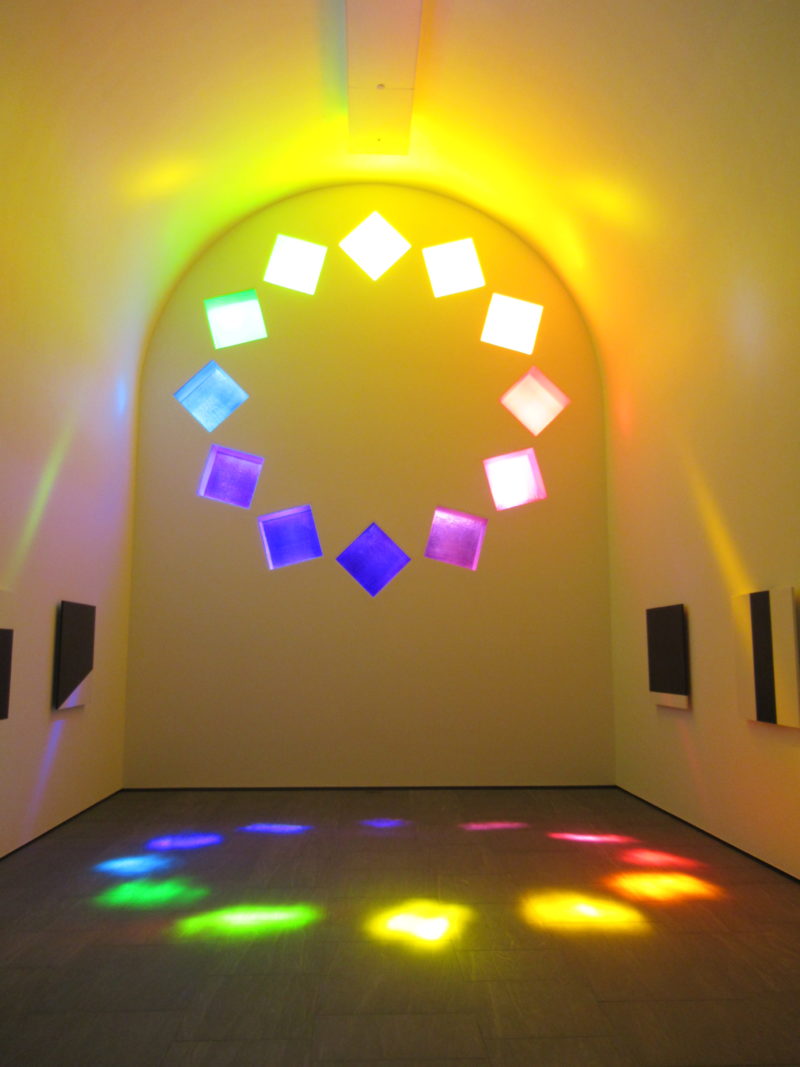
Concept
When Kelly was imagining the design of this masterpiece, he was drawing inspiration from the travels he undertook through Europe in his 20s when he served during World War II. After the end of the war, the artist lived in France for approximately five to six years and visited his idols while expanding his experience and ideas about art, focusing on art that featured color and pure form.
He conceived the building as a holistic yet unchanging single work of art that would create an immersive 8 environment with color, form and light coming together harmoniously.

While the installation has a chapel-like form, Kelly did not intend for it to be religious and denominational. Instead, it was a result of his experiences with church, chapel and cathedral architectural structures that he saw in Europe. The Austin is, however, a modernist building 9 and has incorporated Kelly’s experiences and inspirations as an artist who used architecture and space as an influence on how he thought about his creations.
Austin incorporates Kelly’s architectural visions as well as artistic elements and his concepts and style. He uses black and white, two oppositional color elements, to evoke the basic, elemental feel of the structure.
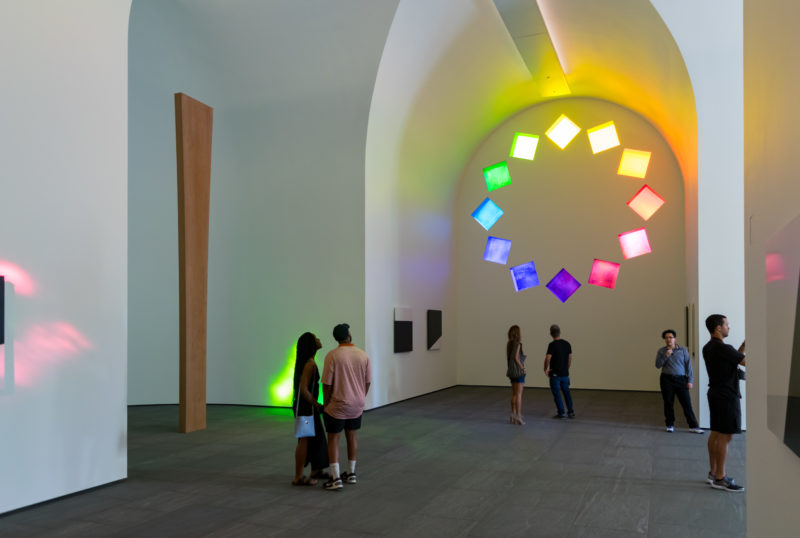
Kelly uses the totem as a focal point as the vertical 18-foot high wooden structure with slight curves draws the eye and gives the illusion of speed. Again, Kelly incorporated spectrum in his design as he always did, attracted by the pure form, color and light.
He uses the stained-glass windows to form an array of colors and light within the interior of the building, informed by his knowledge of color theory and fascination with the spectrum. Austin further incorporates a color grid from the windows to the black and white marbles giving the chapel’s interior different light effects.
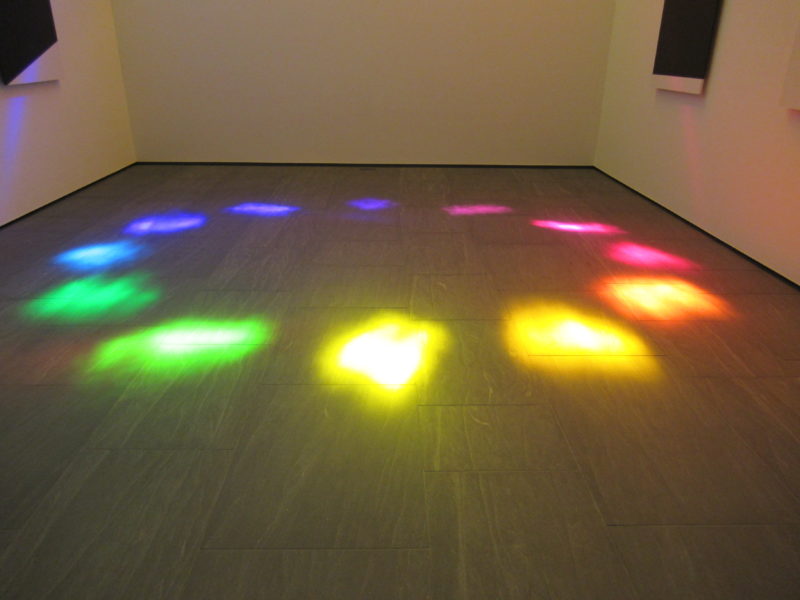
Kelly, therefore, manages to conceive a unique modernist building with all the artistic elements and styles that he was fascinated with and dedicated his artistic career and ideas to.
Design and plan
Austin measures 60 ft. by 73 ft. by 26 ft. 4 in. and features black and white marble panels, a redwood totem and colored glass windows. The installation, like most of Kelly’s monumental works, focuses on pure form and color. To achieve this, the two window formations that receive the most sunlight daily bathe their inside with natural light.
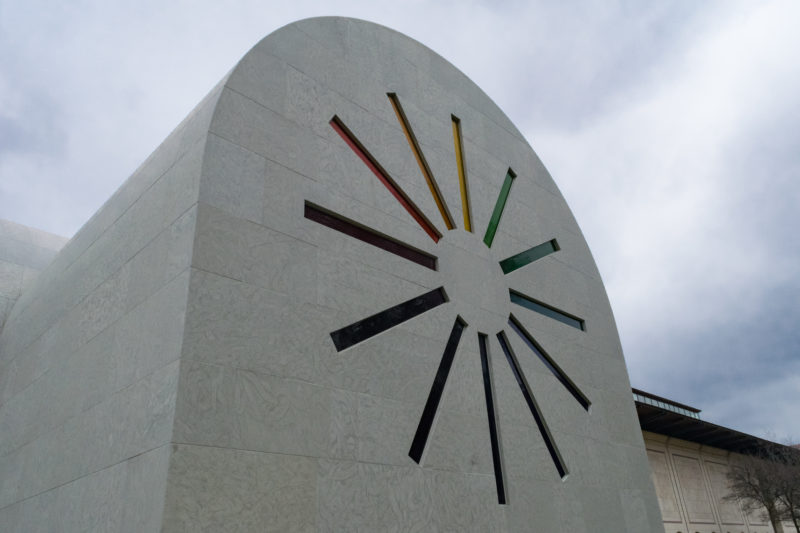
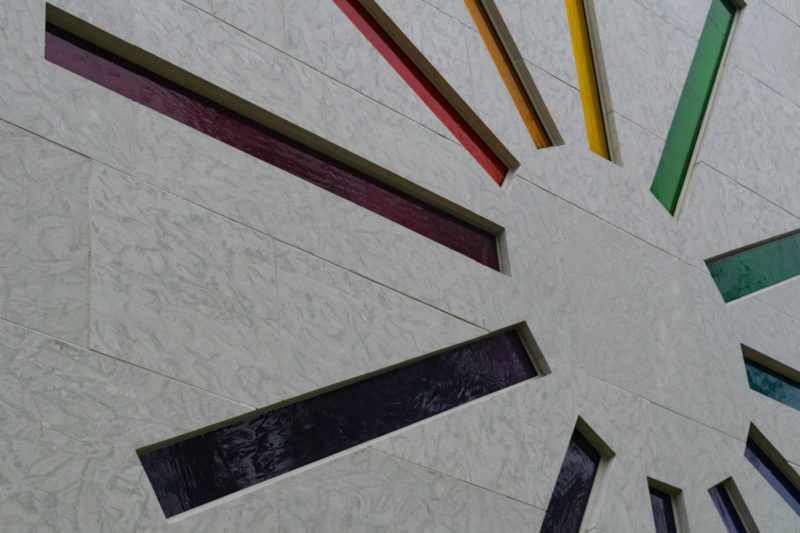
The installation features a stained glass arrangement of tumbling squares located on its east facade and a starburst arrangement located on the west façade that creates colored light patterns within its interior throughout the day. It serves its function as a place of rest, giving students and visitors alike a chance to take a break and rest their eyes and minds. The interior walls form a canvas for the artist’s abstract interpretations of the 14 stations of the cross.
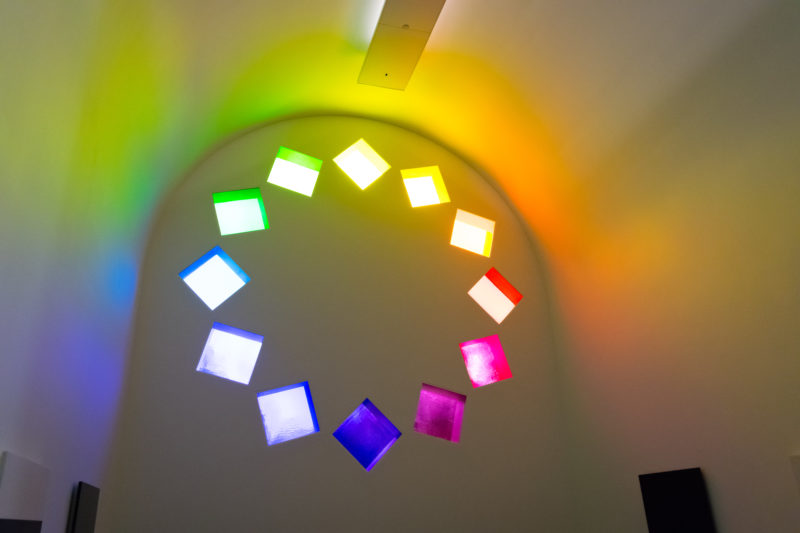
To commission the work and incorporate Kelly’s input and approval at every stage before its construction, Wicha and Kelly exchanged multiple 3D models, mockups and renderings. They wanted to ensure that the building would be a structure that honored every detail of Kelly’s design, meeting his exacting tolerances while also being a structure that would be safe for inhabitants and visitors.
As such, the Linbeck Group that handled design and build together with the architect, Overland partners, coordinated closely with Kelly, Wicha and the rest of the project management group, the University of Texas at Austin Office of Capital Projects, to ensure that the architectural design process captured Kelly’s design, vision and intent accurately.
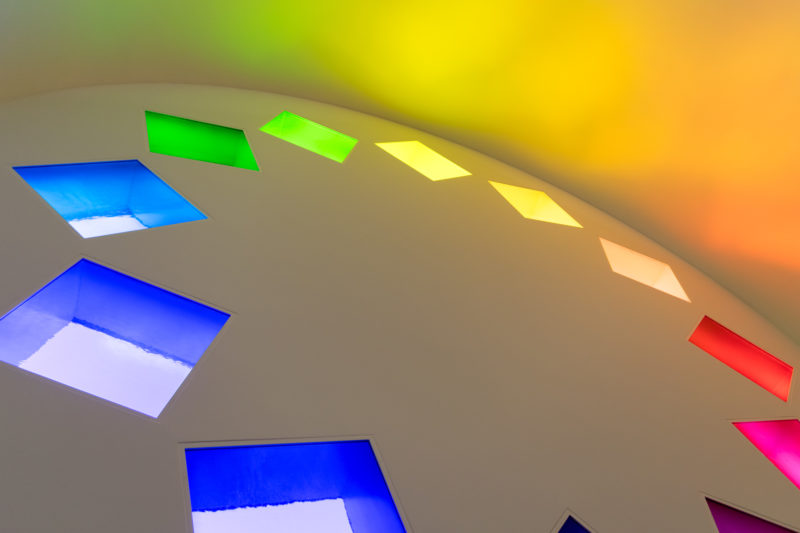
Construction
The installation is composed of Spanish Limestone, with the building consisting of vaulted space and about 1569 limestone panels were used to clad the structure.
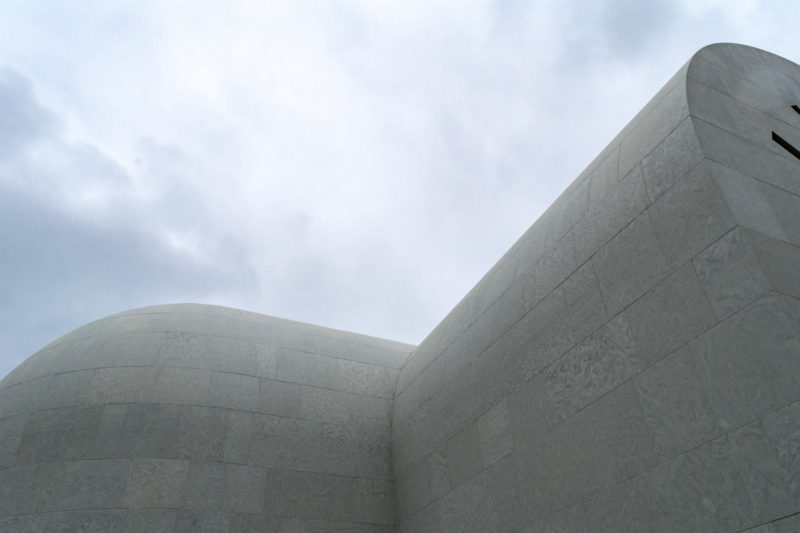
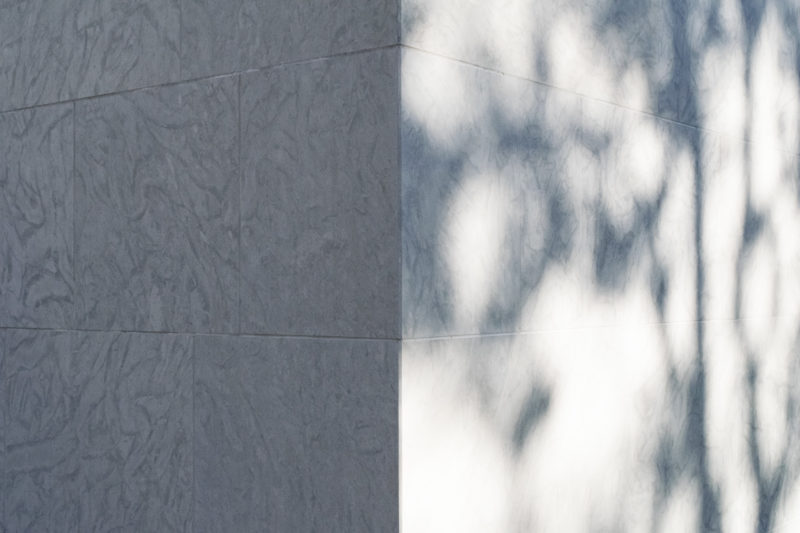
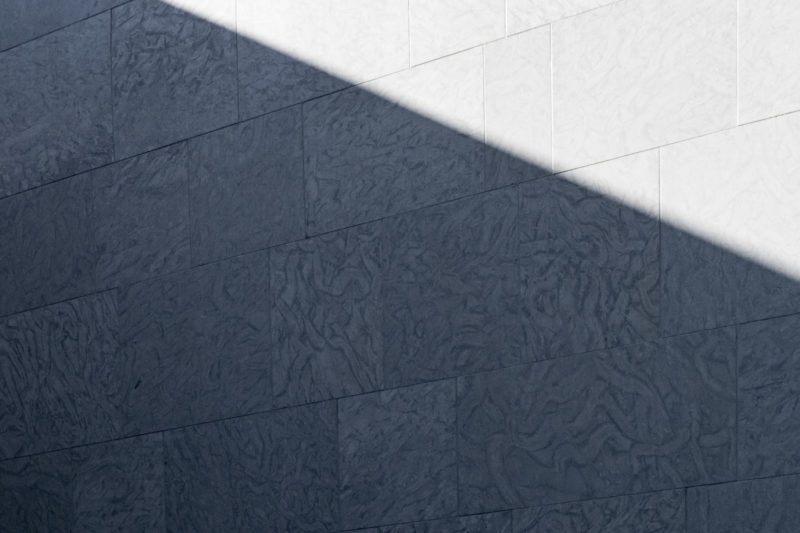
Both the interior stone flooring and plaza flooring were constructed using granite from Georgia. On the other hand, the entry door is made using wood from a native Texas live oak tree and the 33 glass windows were fabricated in Germany and installed to form the motifs.
The interior walls of Austin also comprise fourteen black and white marble panels, each panel measuring 40 in by 40 in. The black marble was sourced from Belgium, while the white marble came from Carrara in Italy.
Previously, Kelly had experimented with a number of compositions for the panels drawing inspiration from the station of the cross. Finally, construction also included installing the 18-foot tall totem made from salvaged redwood.
The engineer, ARUP and specialty contractors, Chamberlin Austin, liaised to ensure that the construction followed the design accurately. Construction took 19 months to complete and cost approximately $11 million.
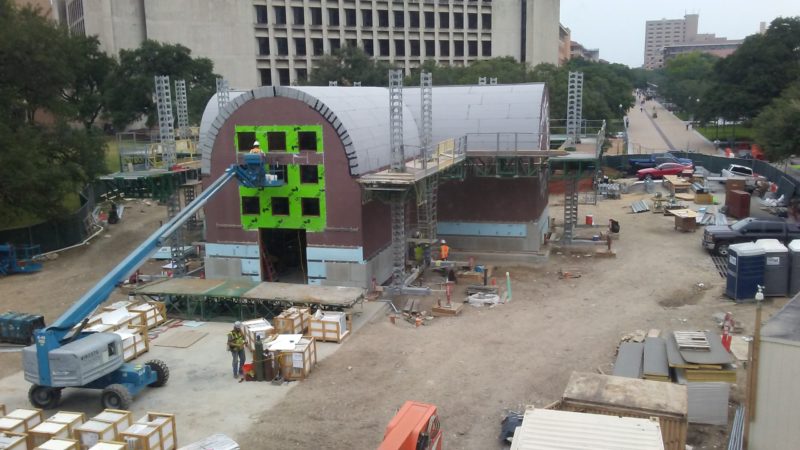
It was built along the sightlines of the State Capitol in a green space within the university’s campus and the environment around the building. Both its exterior structure as well as the interior environment makes it feel inviting and inspires reflection, rest and contemplation.
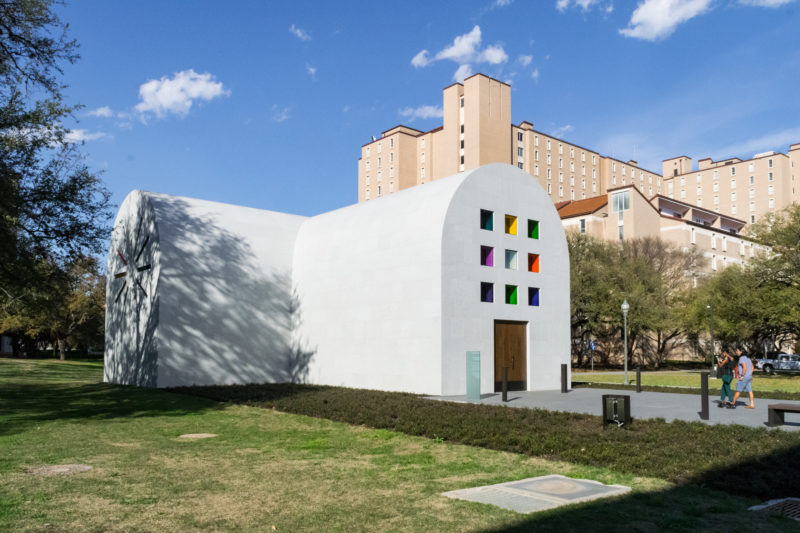
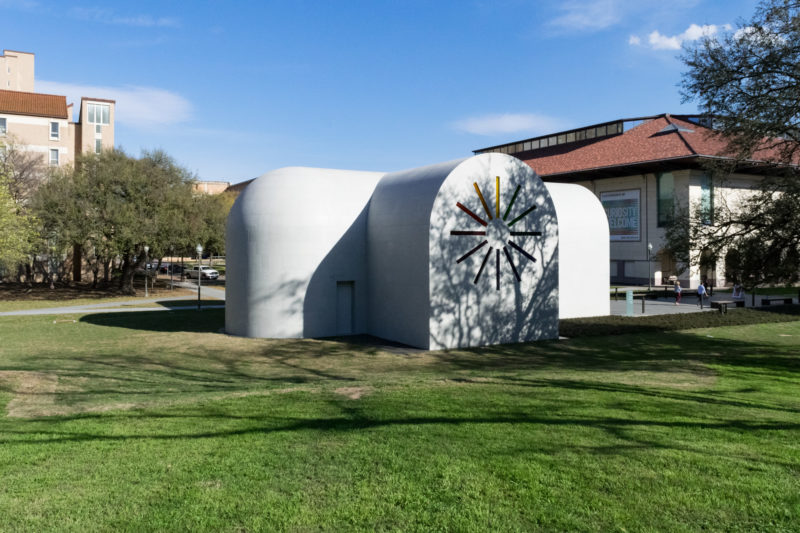
To communicate this design to an architect, Kelly had created simple plans, showing two intersecting barrel vaults that formed a groin vault at the transept. He also added an eastern-oriented half-dome that terminated that end with flat facades facing north, south and west, each of them featuring stained-glass compositions under the arches.
These plans that he created in 1987 show the scale he had in mind, numbering the walls and showing the sizes of both the walls and the arches. These were meant to convey the precision and clarity of the overall design and the measurements involved.
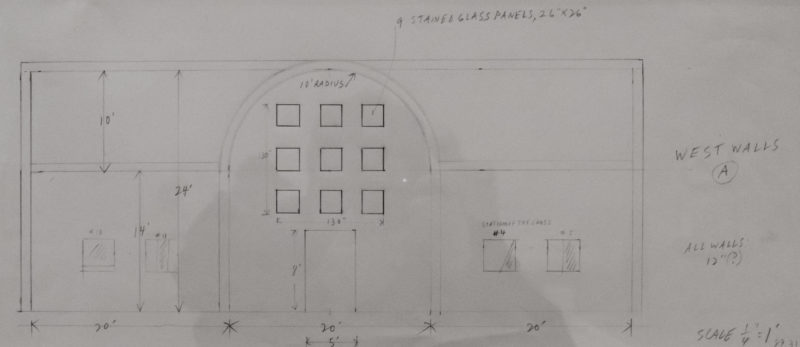
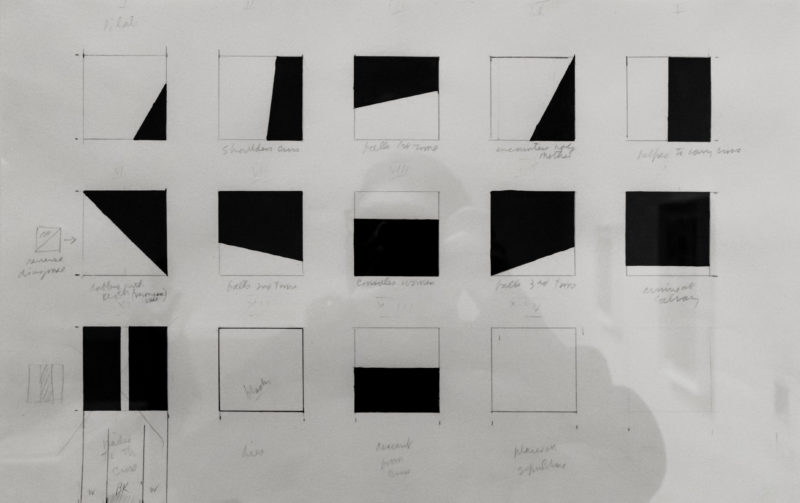
Kelly’s drawings of the interior show the Totem sculpture’s various forms and his exploration of the different configurations of the stained glass windows. To illustrate his design, Kelly made two models of it, with the first one using paper and the other created out of foam board, using lighting gels to simulate the effect of the stained glass windows.
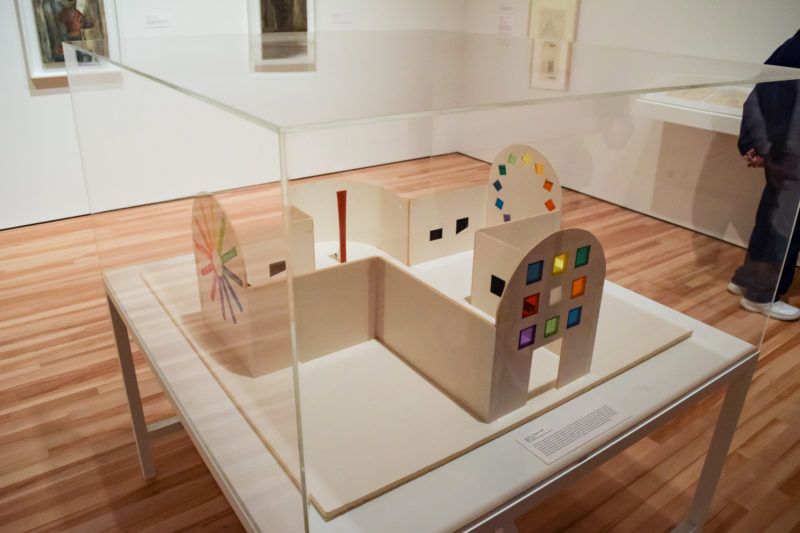
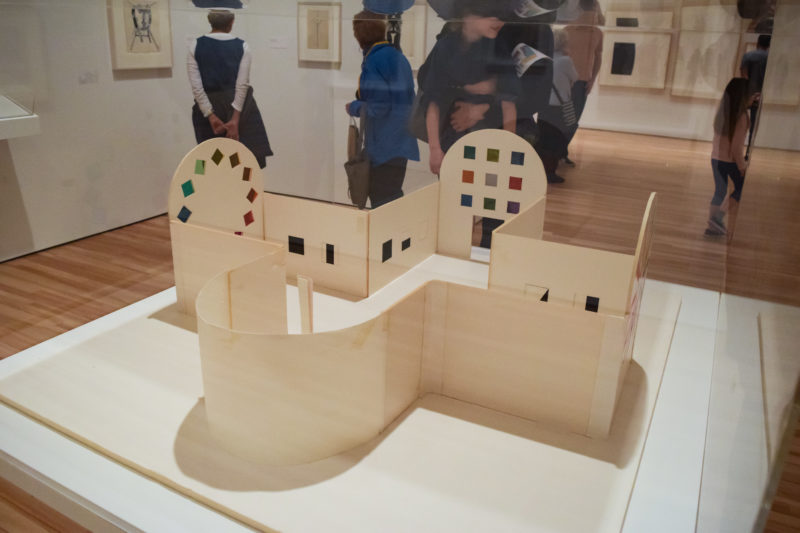
Once the details of the design concepts and art had been worked out, the architects put out detailed plans and coordinated with the contractors to realize the construction of the structure.
Kelly was, unfortunately, unable to visit the site of Austin during the design development phase. He, however, was very involved in looking over and approving the numerous mockups, renderings, models, drawings, material samples, etc., that were sent to his studio for his review. His partner, Jack Shear, also made regular visits to the site well into the construction phase, even after Kelly’s death.
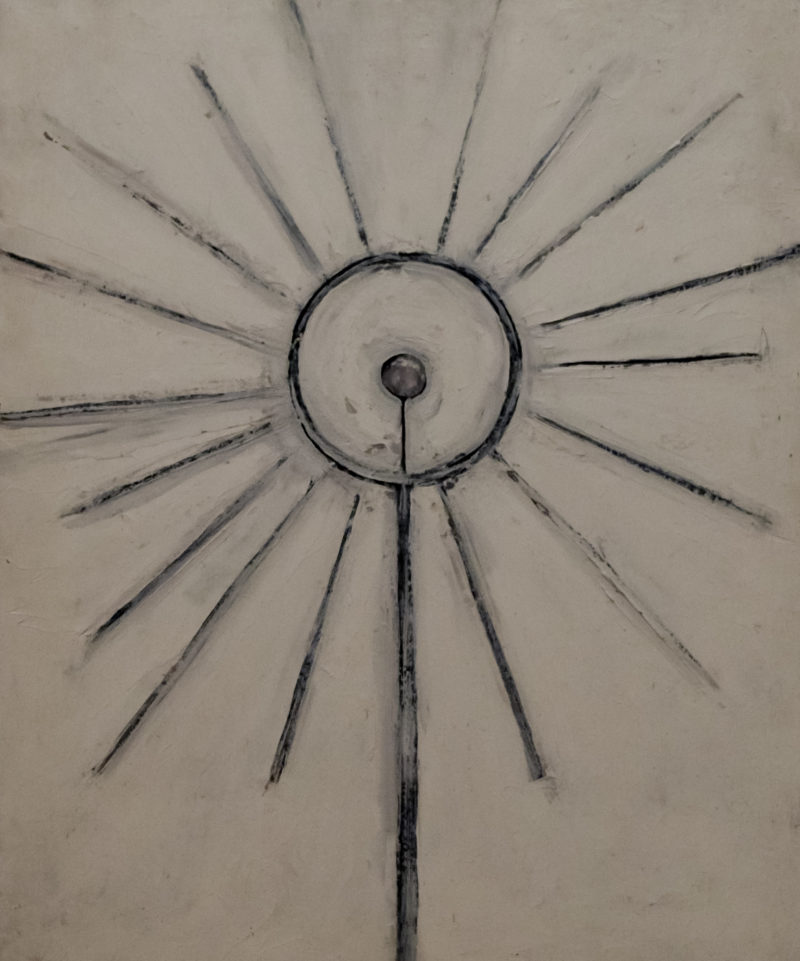
Changes to the original design
Initially, when Kelly conceived the construction of the building, he was designing it for California. Hence, the building was to have thinner walls of concrete and cast, as well as no climate systems or lighting. However, since the location had changed to Texas – and to a prominent site at that with security, lighting and climate control, and where building control codes were necessary, a tweak in the design was required to ensure that these systems would not be seen.
Such were Kelly’s worries that if they made the walls thicker to hide the building support systems, this could limit the light being transmitted through the windows. This and other redesign adjustments were made to the original design.

One of the biggest changes to Kelly’s original design was the use of stone for the exterior of the installation instead of the Mediterranean-style, stuccoed and white-washed surface that he envisioned. This was, however, determined unfeasible in the Texas climate and eventually, the artist, after going back to his inspiration, chose Spanish limestone.
The architects designed using a computer program to determine the random sequencing, nine different widths and three different heights of light gray stone to achieve the irregularity that Kelly wanted on the surface of his building.
Facts and details
Many facts make viewing, visiting, and experiencing the chapel such a delight. First, why is it called Austin? The title of this construction is in line with Kelly’s tradition of naming some of his monumental works after where they are connected to. Thus, Austin is connected to Austin, Texas.
The building was constructed at The University of Texas at Austin because Kelly gifted Austin’s design concept to the Blanton Museum of Art at the university to make this work accessible to the public. Hence, this was a realistic site as Austin became part of the museum’s permanent collection. Visitors can come in and rest and enjoy the ambiance and the merging of color and light patterns within the chapel.
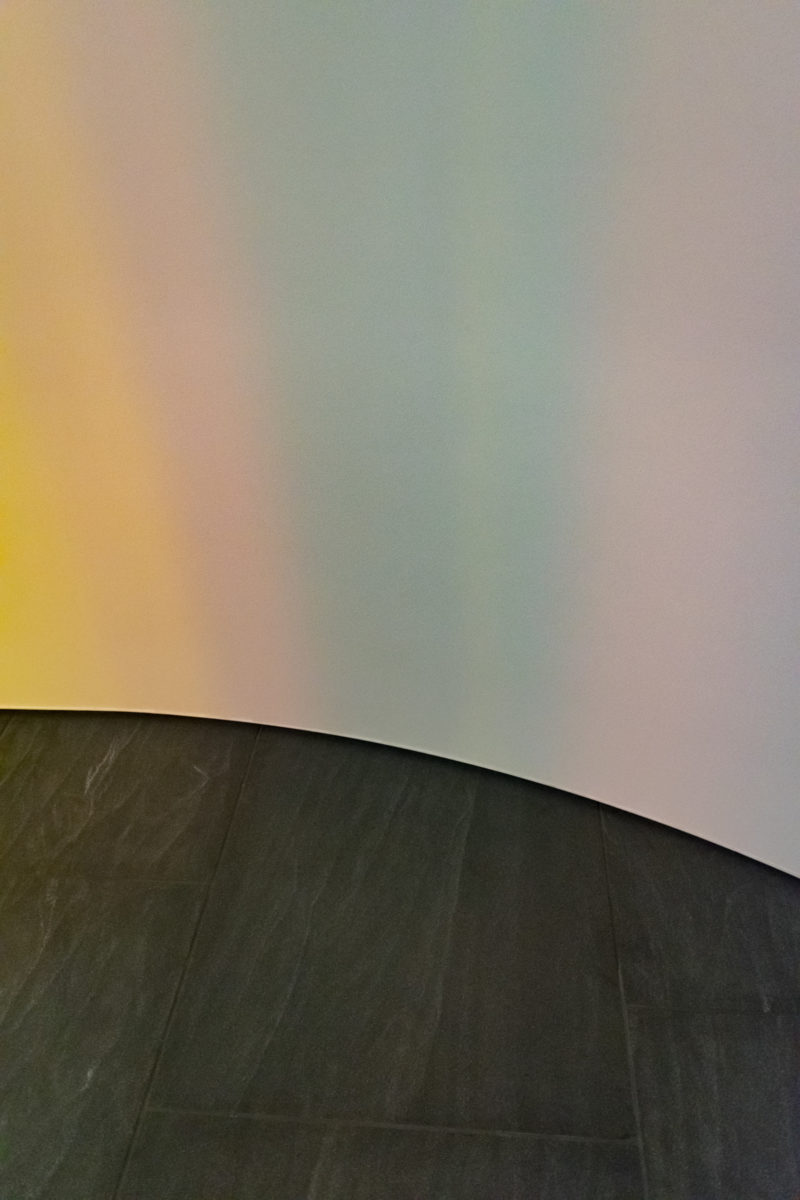
To visit Austin you can reserve tickets for days when it is open, that is, between Wednesdays and Sundays. Because the light and color patterns change throughout the day with the changing position of the sun, the experience at various times of the day is unique. The chapel is, however, non-religious and meant to be an artistic form that is inspiring and reflective for visitors.
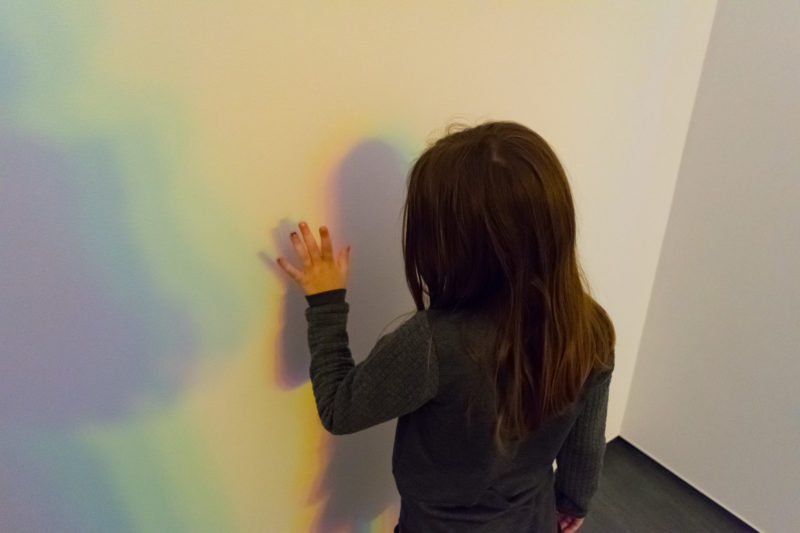
Short bio
Ellsworth Kelly was born in New York and raised in New Jersey and while growing up, he discovered his artistic talent and studied at the Pratt Institute in Brooklyn before World War II. While serving in the war, he created instructional posters and made drawings of his fellow soldiers as well as other sketches inspired by ecclesiastical architecture.
Kelly had an illustrious seven-decade career that involved stripping painting and sculpture down to their pure form and color. Earlier, he dabbled in Cubism, Abstract Expressionism and even Pop Art 10. He became a renowned sculptor, draughtsman, abstract painter and printmaker.
However, Austin is the only building that Kelly ever designed and he died two months after its construction started. Kelly’s work has been shown in many museums and artistic venues such as the Museum of Modern Art 11, Solomon R. Guggenheim Museum 12, Whitney Museum of American Art 13, Art Institute of Chicago 14, Tate Modern 15, London, among other museums and venues in Europe and the US.
Final words
In a nutshell, while Austin is considered a chapel, Kelly was a nonbeliever and according to his partner, the chapel can be seen as one dedicated to creativity.
Kelly was born and grew up near New York. However, he decided to install his most renowned work in Texas, perhaps because Texas gets a lot of light and the skies are not obstructed by tall concrete structures. Hence with his interest in art that focused on the pure form and color and his preference of working under natural light, he established a kinship with the city. He bought land outside Marfa and it must have given him satisfaction to have his last artwork – his only building, installed in Texas.
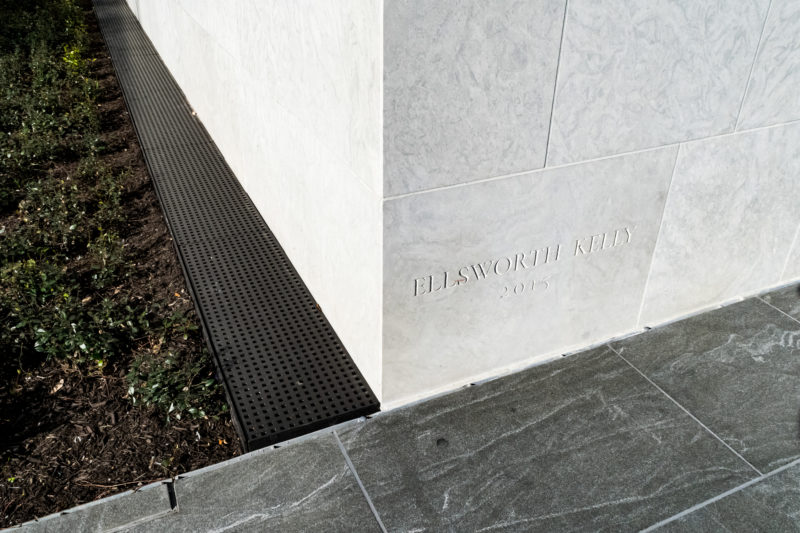
Explore nearby
Blanton Museum of Art, Austin, TX
 Mark Rothko's Houston Chapel233 km away
Mark Rothko's Houston Chapel233 km away
